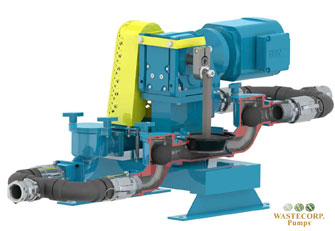
You see them everywhere: tote tanks with steel or aluminum cages that temporarily store a variety of liquids including waste oil, septic waste, restaurant grease trap waste and industrial fluids. What many people don’t know is that having a proper diaphragm pump to transfer liquid both into or out of the tank can make all the difference in having safe and clean pumps out versus pump outs that leave the possibility that potentially hazardous liquids may contaminate your job site or drink water.
One of our customers Greg A. from Philadelphia, PA (who happens to be a consultant to a Fortune 500 company) exemplifies more or less, one of our most frequent types of questions regarding pumping into or out of tote tanks:
Our customer wants to pump Colloidal Silica (an inorganic binding agent) material out of 250 gallon totes (bottom side opening) up to a mezzanine area nearby. There will be about 15′ vertical discharge, then some additional horizontal piping (~15′) and maybe a couple fittings to two open mixing tanks, discharge into top of tank. Piping does not exist right now, plan to use 1-1/2″ or 2″ pvc pipe or as recommended. Need to drain the totes as empty as possible, may also unintentionally run dry from time to time. Wondering if your Mud Sucker Model 2B-EC would be a good fit? Thanks, Greg A. – Philadelphia, PA, USA
Greg, thanks for question. In fact, either the Mud Sucker 2B-EC (electric) or Mud Sucker 2B-M (gas/diesel) are generally well suited for slurries that may have corrosive properties. Both one of these pumps can pump up to 20 GPM and we also have a 2B-DD double diaphragm model as well that can pump up to 40 GPM. Any one of our Mud Sucker pumps can run dry for extended periods but you should dry and limit this due to unnecessary wear-and-tear factors.
The real test for these pumps to work is for the liquid to flow effortlessly off of a shovel. If it doesn’t you can simply add water or heat the substance in colder climates. Make sure you check the properties of the liquid you are pumping to ensure that it is safe to do either one of the suggestions above.